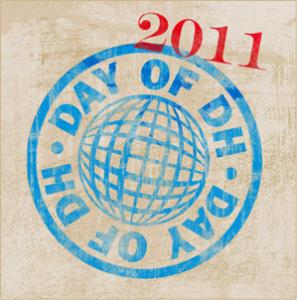The Daily Lives of Digital Humanists

The growing field of the digital humanities has, for some time, been immersed in the most fundamental of struggles: that of self-definition. In a recent post in this space, Jeff Rogers explores the fallout of a contentious MLA position paper that designated the digital humanist a builder who therefore, must know how to code. Recent definitions of the digital humanities have been more inclusive, ranging from the modest: “The use of digital tools and methods in humanities study and dissemination” (Geoffrey Rockwell, University of Alberta); to the grandiose: “DH is a multi-discipline through which criticism, analysis, and speculation is focused on the past, present, and future of the human condition” (Richard Cunningham, Acadia University). Perhaps most apt is the response of Lou Burnard (Oxford), who defines the digital humanities, “With extreme reluctance.”
These definitions are offered by participants of “A Day in the Life of the Digital Humanities”—more popularly (and graphically) known as Day of DH—a community publication project organized by scholars from the Humanities Computing Program at the University of Alberta. Though the Day of DH asks participants to explain their understanding of the digital humanities, the implicit claim of the project is that the field can be defined only through its practice. And so the Day of DH sets out to answer the question, “Just what do computing humanists really do?” by asking self-identified digital humanists from around the world to collaborate in producing a richly varied answer: a website that weaves together participants' blog-like journals chronicling their daily activities on March 18. (Apply here by March 15 to participate.)
The activities of digital humanists are to some extent predetermined by the standardized tags that will be used to stitch together the disparate participant journals into one Day of DH website: Communication, Email, Data Collection, Editing, Writing, Reading, Blogging, Reflecting, Programming, and Visualization. It turns out; however, that the daily lives of digital humanists, much like those of the rest of us, are composed of many moments more mundane than these activities. And so browsing through the Day of DH 2010 journals is a little like stumbling upon someone else’s Facebook news feed in that it too demonstrates the difficulty of sustaining an interest in, for example, the music strangers listen to en route to campus, or their preferred caffeinated beverages.
The project might be more effective in defining the digital humanities if, rather than chronicling the daily lives of digital humanists, it catalogued their projects. That said, what the Day of DH does achieve is impressive: it forges a notable sense of community among digital humanists. And if the work of the digital humanist includes a consideration of new forms of subjectivity and solidarity that emerge from social media, then the Day of DH constitutes both its study and its performance.